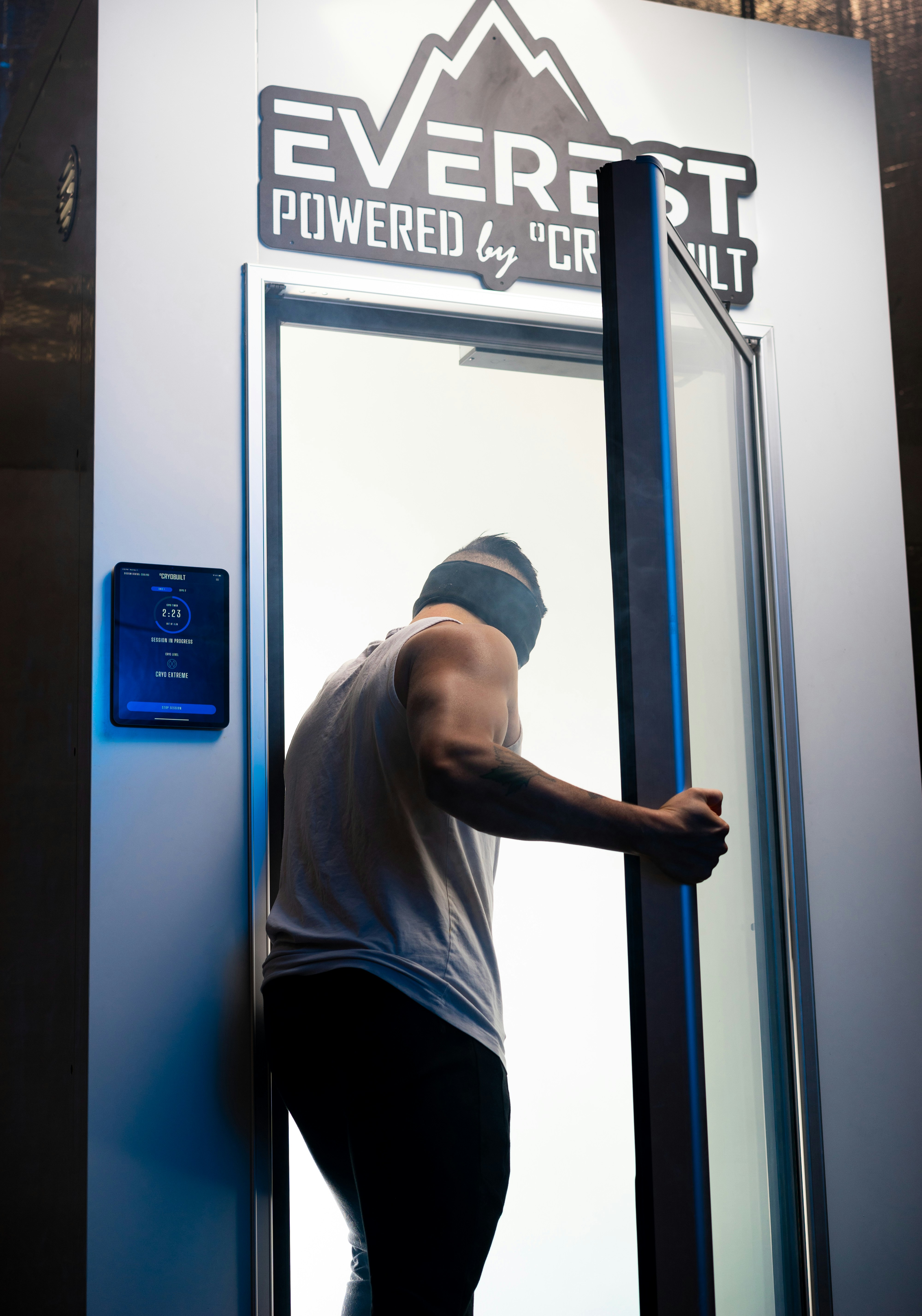Have you ever wondered why athletes and fitness enthusiasts around the world are increasingly turning to cold plunging as a part of their recovery routine? The practice of immersing oneself in cold water might sound challenging or uncomfortable at first, but it has become a popular recovery technique due to its numerous benefits for the body, including its potential to improve glycogen replenishment rates.
Let’s explore this intriguing connection between cold plunging and glycogen replenishment. Understanding this could unlock new ways for you to enhance your post-exercise recovery and optimize performance. Through a friendly exploration of the practice and its effects, you might find yourself considering this chilly recovery method as part of your routine.
Understanding Glycogen and Its Importance
What is Glycogen?
Glycogen, a polysaccharide form of glucose, acts as a primary energy storage molecule in the body. Stored in the liver and muscles, glycogen serves as a readily available energy source during periods of increased physical activity, ensuring your muscles have the energy they need.
Why is Glycogen Replenishment Important?
After a session of intense physical activity, your glycogen stores become depleted. Replenishing these stores is crucial for athletes and everyone aiming to maintain stamina and performance over time. Adequate glycogen replenishment can help delay fatigue, enhance muscle recovery, and prepare your body for future workouts.
The Concept of Cold Plunging
What is Cold Plunging?
Cold plunging involves immersing the body in cold water for a certain period, typically at temperatures below 59°F (15°C). This practice can take place in a cold plunge pool, an ice bath, or a naturally cold body of water. Despite the initial shock of cold exposure, many people report feeling invigorated post-emergence, setting the stage for faster recovery.
Historical and Cultural Context of Cold Plunging
The practice of cold plunging spans history and various cultures. From the ancient Romans, who revered bathhouses with cold pools, to the Scandinavians, who embraced icy swims followed by sauna sessions, cold immersive practices have long been part of human routines. These cultural practices hint at a traditional understanding of the revitalizing benefits of cold water exposure.
How Cold Plunging Affects Your Body in the Context of Glycogen
The Science Behind Cold Exposure and Glycogen Replenishment
Cold exposure introduces a variety of physiological responses in your body. It triggers vasoconstriction, reducing the size of blood vessels to minimize heat loss. This response plays a crucial role in modulating recovery processes, which can indirectly influence glycogen replenishment.
One hypothesis is that cold exposure lowers the metabolic rate initially, allowing your body to focus on repairing tissues and possibly enhancing the efficiency of glycogen synthesis. Furthermore, systematic cold exposure is believed to optimize insulin sensitivity, enabling more efficient glucose uptake into cells.
Impact on Muscle Recovery
Your muscles undergo significant stress and potential damage during exercise. Cold plunging helps mitigate the inflammatory response, reducing muscle soreness and promoting faster recovery of muscle function. By potentially accelerating the recovery process, cold plunging allows your body to regain its energy stores more efficiently, which can include restoring glycogen levels.
Connecting the Dots: Cold Plunging and Glycogen Replenishment
Enhanced Blood Circulation
While cold exposure can initially constrict blood vessels, once out of the cold, your blood vessels dilate. This increase in blood flow can speed up the delivery of nutrients and glucose to muscle cells, aiding in the restoration of glycogen levels.
Potential Positive Effects on Insulin Sensitivity
Insulin plays a pivotal role in signaling muscle cells to absorb glucose for storage as glycogen. Some research suggests that regular exposure to cold temperatures might improve insulin sensitivity, making your body more efficient in transporting glucose into muscle cells, thereby replenishing glycogen stores more swiftly.
Time Efficiency and Glycogen Related Benefits
Cold plunging is not only an accessible practice; it can be quite time-efficient. Even short bouts of cold exposure might lead to notable improvements in recovery. For someone looking to enhance their post-workout routine quickly, cold plunging could emerge as a valuable addition to supporting glycogen levels and overall energy recovery.
Practical Tips for Effective Cold Plunging
How to Integrate Cold Plunging into Your Routine
-
Start Gradually:
Begin with shorter durations and moderate temperatures. As you become accustomed to the practice, you can increase both the duration and the intensity of the cold exposure gradually. -
Timing Matters:
While there are benefits to cold plunging immediately after exercise, some studies suggest waiting a few hours post-exercise might be more beneficial for glycogen replenishment and muscle adaptation. -
Listen to Your Body:
Cold exposure is highly personal. Pay attention to how your body responds and adjust your routine to ensure comfort and safety.
Safety Considerations
-
Health Conditions:
Individuals with cardiovascular issues or those prone to cold-related conditions should consult a healthcare provider before engaging in cold plunging. -
Temperature and Duration:
Generally, sticking to a range of 50-59°F (10-15°C) for up to 10-15 minutes proves effective while minimizing risks. Avoid prolonged exposure to prevent hypothermia. -
Post-Plunge Warming:
Ensure you have strategies to warm up post-plunge, such as a warm drink or wrap, to stabilize your body temperature efficiently.
Exploring Other Options for Glycogen Replenishment
Dietary Interventions
Food and nutrition play a significant role in glycogen synthesis. Consuming carbohydrates promptly post-exercise helps initiate glycogen replenishment. Pairing carbohydrates with proteins can further amplify this process.
| Carbohydrate Sources | Protein Sources |
|---|---|
| Bananas | Chicken |
| Rice | Greek yogurt |
| Oats | Lentils |
Adequate Rest and Recovery
Your body uses time spent resting to synthesize glycogen. Ensuring you’re getting enough sleep and allowing for rest days in your routine aids in the natural recovery processes, including the restoration of glycogen levels.
Comparing Cold Plunging to Other Recovery Techniques
Cold plunging is one facet of recovery among many techniques, including stretching, massages, and physiotherapy. Each method carries unique benefits, but the choice depends on individual preference, needs, and health conditions.
| Recovery Technique | Benefits |
|---|---|
| Cold Plunging | Increases blood flow, reduces inflammation |
| Stretching | Increases flexibility, reduces tension |
| Massage Therapy | Enhances relaxation, relieves stress |

Harnessing the Power of Cold Plunging and Beyond
Incorporating a Holistic Approach
A holistic approach, combining cold plunging with nutrition and rest, might offer a comprehensive strategy to enhance glycogen replenishment. By cross-integrating multiple recovery methods, you can potentially achieve optimal outcomes.
Monitoring and Adjusting Your Routine
Track your recovery and glycogen replenishment progress by monitoring performance markers, like energy levels or workout capacity. Being attentive to your body and willing to adjust practices as needed is integral for continual improvement.
Seeking Professional Guidance
Considering individual variability in response to cold plunging, consulting with fitness or health professionals can provide guidance tailored to your personal recovery and glycogen replenishment goals.
Your Journey to Enhanced Recovery
Cold plunging, with its historical roots and scientifically backed potential, presents a fascinating opportunity to enhance your post-exercise recovery. Whether you’re an athlete seeking performance optimization or someone curious about innovative recovery methods, cold plunging might offer just the chilly adventure you need. By combining cold plunging with dietary and holistic recovery measures, you can significantly improve glycogen restoration, ultimately supporting better overall performance.





